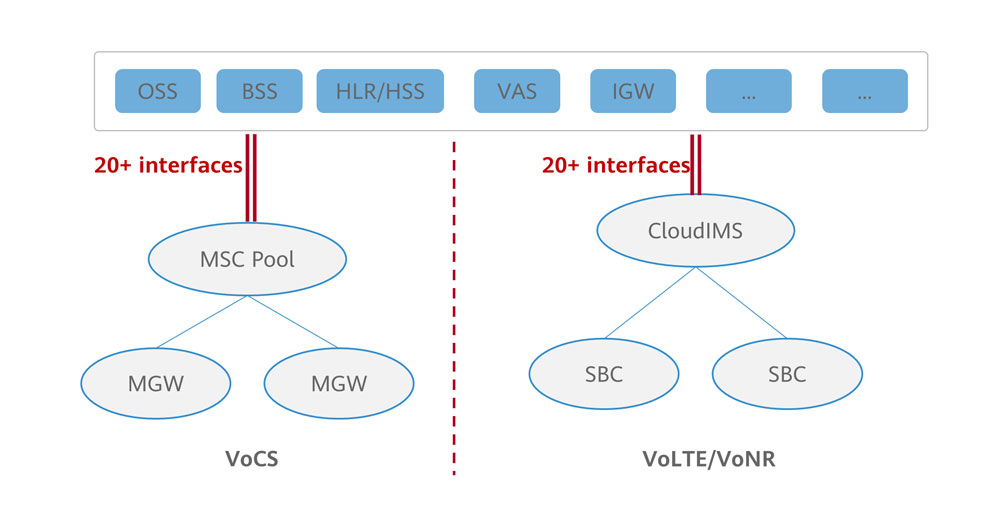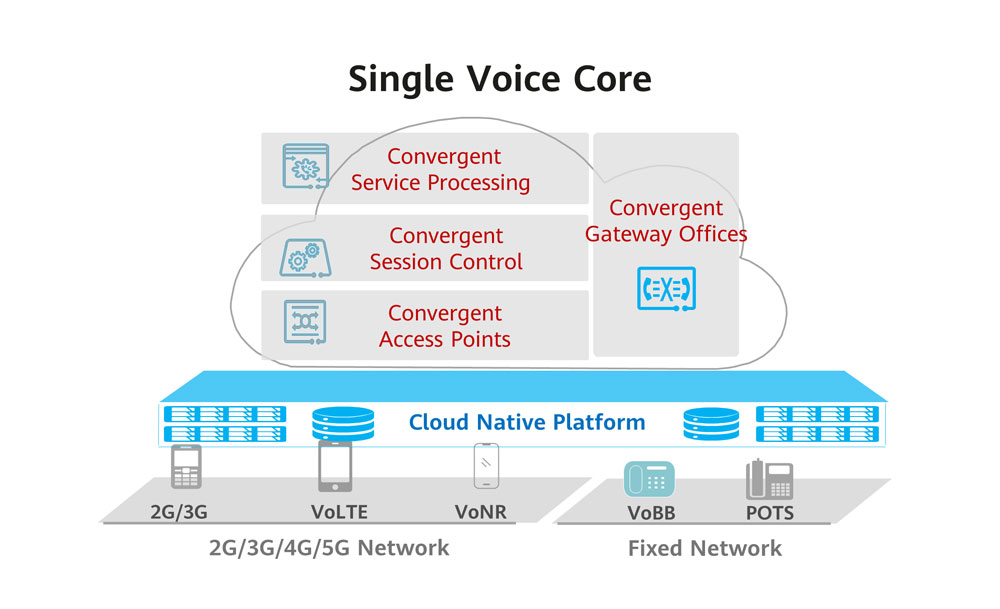A Glance at Single Voice Core
For decades, voice services born on telecom networks are available for subscribers all over the world under all circumstances. Though over the top (OTT) services have taken over some of the voice market in recent years, telecom networks are still the best option in scenarios requiring low-latency, reliable communication. With the proliferation of 5G networks, global carriers have been setting their attention on how to build a 5G-oriented voice network.
Major Challenges to Voice Network Evolution
Challenge 1: 2G/3G voice core networks are entering end of service (EOS).Statistics shows that most carriers leveraged the softswitch technology and built circuit switched (CS) networks, voice core networks in the 2G/3G era, in 2005-2010. The devices on these CS networks have now been online for at least 10 years, which is generally recognized by the industry as one full life cycle. These CS networks are in urgent need of reconstruction. However, there are still a large number of traditional 2G/3G mobile phones and Internet of Things (IoT) terminals on live networks, and 4G and 5G network coverage is intermittent. CS networks cannot be disassembled in just one day. Carriers therefore call for a solution that can provide secure and reliable voice services, maximize the return of investment on existing networks, and support smooth evolution to 5G networks.

Figure 1: Lifecycle of softswitch devices on CS networks
Challenge 2: Maintaining CS and IMS networks is costly.It is known that, with 4G, voices services can be provided through the IP multimedia subsystem (IMS). Most carriers, however, did not abandon CS networks during the evolution from 2G/3G to 4G networks and had to operate both CS and IMS networks. If carriers continue to use this siloed architecture to build their 5G networks, they will have to invest in and operate several types of voice networks. This results in high O&M cost, and a less-than-ideal return on investment.

Figure 2: Siloed voice core networks
To address the preceding challenges, most carriers have reached a consensus to construct one network that can integrate 2G, 3G, 4G, and 5G voice services.
Agile, Efficient, All-in-one Voice Network in the 5G Era
With 20-years of experience providing telecom services, Huawei has unveiled the first all cloud, all convergence Single Voice Core (SVC) solution to help carriers cope with challenges, such as overlapping funds and high O&M cost. This solution is built over the top of the IMS network and provides services for 2G, 3G, 4G, 5G, and fixed-line subscribers. An SVC network is characterized by:
- Convergent service processing: A convergent application server provides voice services for all 2G, 3G, 4G, 5G, and fixed-line subscribers.
- Convergent session control: The IMS controls call sessions for all 2G, 3G, 4G, 5G, and fixed-line subscribers.
- Convergent access points: All 2G, 3G, 4G, 5G, and fixed-line subscribers can access the IMS through the same entrances.
- Convergent gateway offices: Convergent gateway offices are deployed for interworking in different scenarios.

Figure 3: Architecture of the SVC solution
SVC networks require fewer NEs and interfaces than a conventional network, simplifying the network architecture, optimizing fund allocation, and improving O&M efficiency. The SVC solution allows carriers to provide the same voice call service experiences for 2G, 3G, 4G, 5G, and fixed-line subscribers, withdraw CS networks, and accelerate cloudification. In addition, the SVC solution provides open telecom capabilities, enabling industry customers to use value-added services, such as HD video call and video RBT, and accelerating service innovation.
5G construction is in full swing. The Huawei SVC solution aims to assist carriers to integrate voice networks, expand their service portfolio, and build an agile, efficient voice network.